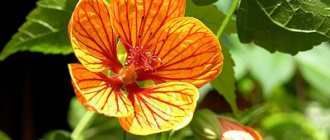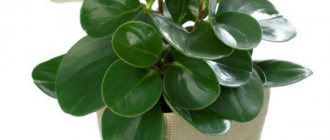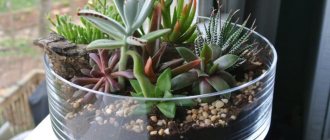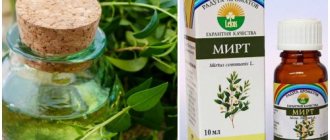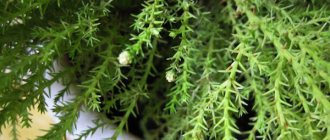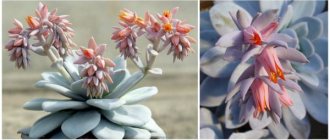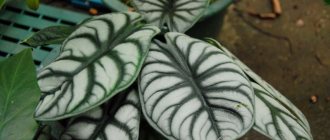Hydrangea (Hydrangea) is a member of the genus of flowering plants in the Hydrangeaceae family. This genus includes approximately 80 species, and is represented by shrubs and small trees. Under natural conditions, this plant is found in South and North America, Japan, China and other countries of South and East Asia. This plant was named after one of the princesses of the Holy Roman Empire. And systematic botanists called it “hydrangea,” which is translated from ancient Greek as “a vessel with water.” This is due to the fact that the plant is very moisture-loving.
Hydrangea appeared in indoor culture in European countries in 1820. Later, it began to be cultivated in open ground. As soon as flower growers and gardeners began to grow hydrangea, experts began breeding. Thanks to them, many varieties and varieties were born. Today, this beautifully flowering plant can be found not only in the garden, but also in a pot on the terrace, veranda or balcony.
Are there indoor hydrangeas?
Growing most garden crops as a houseplant is problematic. To do this, they need to be small, or the owners know how to restrain their growth. They also slowly grew green mass (except for vines), and did not have a very deep and voluminous root system.
Hydrangea only partially meets these requirements. But some varieties of Hydrangea Largeleaf can actually be planted in containers and grown as an indoor flower.
Other indoor species are more affected. Even if they are properly cared for, they usually die during the dormant period and rarely survive until spring.
The plant, which for unknown reasons is called Hydrangea Jasmine, is actually Gardenia. It is united with hydrangea by belonging to the Dicotyledonous class. In botany, such cultures are not even considered related.
RELATED MATERIALS
Hydrangea is spectacular both in single and group plantings. The main thing is that the soil is rich and...
2
Paniculata hydrangea is one of the most popular and beloved crops by gardeners. We specifically...
3
Tree hydrangea appeared in my garden unexpectedly - a neighbor gave me cuttings. After a couple...
Benefits of container gardening
Stable decorative effect. For container design...
3
We are used to planting summer flowers in flowerpots; with them, a veranda, patio or gazebo is certainly transformed. But …
2
20
Once on March 8th I was given an unusually beautiful bush of large-leaved hydrangea with bright...
Indoor varieties
Large-leaved hydrangea (Hydrangea macrophylla) is the only species suitable for indoor growing. This is a shrub with straight, weakly branched shoots that do not become woody for a long time. In potted culture it reaches a maximum of 1 m.
The leaves are large, oval, with a sharp crown and jagged edge, bright green. The flowers are collected in corymbs at the tips of last year's shoots. They are usually colored in all shades of pink, but there are red and white varieties.
Two types of whisks:
- small fertile, absent in some cultivars;
- barren large.
When growing hydrangea as a houseplant, you need to choose the right variety.
It must meet the requirements:
- good immunity - the flower will already be in cramped and uncomfortable conditions, a capricious cultivar simply will not survive;
- compact bush;
- height less than 1 meter;
- ability to grow continuously in a small volume of soil;
- beautiful flowers.
The following varieties can be grown as domestic hydrangea:
- Mini Penny grows up to 60-90 cm, the shield is a pink hemisphere 15-20 cm;
- Mireille - rhombic petals, which is clearly visible in the photo, white with a crimson edging and a dot in the center, the bush is the same height as the previous variety;
- Tovelite in a container reaches half a meter or a little more, the corollas look like pink stars, the shields are flattened, with a cross-section of 12 cm;
- Miss Saori produces white double flowers with variable edge colors - from terracotta to pink or crimson;
- The cauldron reaches 40-60 cm, the shields are spherical, up to 25 cm, the corollas are terry, milky with a very pale pink tint, when blooming the buds in the center are lime-colored;
Maculata - in Russia it can only be grown as an indoor crop; it is distinguished by variegated leaves and flat viburnum-shaped inflorescences; lilac fruiting corollas are framed by large, sterile, white ones.
Maculata
Maculata
Tovelit
Mini Penny
Trimming
The pruning procedure is mandatory in order to maintain the attractive appearance of the plant. For this procedure you will need a well-sharpened knife or pruning shears. The cut should be sharp and even.
During pruning, weak leaves and stems that have begun to dry out or rot are removed. It is also necessary to trim the top of the plant in order to form a more luxuriant crown.
It is ideal to prune twice a year. This is in the fall, when the flowering period has passed, you need to remove weakened leaves and in the spring, when you need to remove weakened shoots.
During the flowering period, the pruning procedure stops. It begins when the first faded flowers or leaves appear. They are the ones that need to be removed so that the plants do not rot.
Flowering period
In the garden, the culture blooms buds from July to August. Usually the plant is at its peak for about 1.5 months. But modern remontant varieties have appeared, producing scutes first at the ends of last year’s shoots, then on young growth.
When cared for at home, indoor hydrangea blooms depending on when it had a dormant period. Every year, the crop must rest for at least 70-80 days at a temperature of 0 to +10 ° C, otherwise it will become weak, begin to get sick, and will not bloom.
It is easier to arrange a dormant period for indoor hydrangea in winter. It is transferred to the basement, a frost-free utility room, and placed on a glazed balcony.
When they want to achieve flowering, indoor hydrangea is “awakened”:
- take it out into the sun;
- water with warm water;
- fed.
Soon the bush begins to bloom, and often produces scutes simultaneously with young leaves. When there are several pots, you can “wake up” the plants one at a time.
If old buds are cut off as soon as they lose their decorative properties, and indoor hydrangeas are taken care of well, even non-remontant varieties can sometimes bloom again.
Pink corollas have an unstable color. This means that when special fertilizers or preparations are used, they turn blue or cyan.
Only hydrangeas that produce rounded caps can change color. The varieties of the Japanese group have flat shields; it is useless to water them with special preparations; they will not turn blue anyway.
You can often come across the statement that if wintering is warm, indoor hydrangea will bloom next time in the cold season. Maybe. When the owners are able to arrange a period of rest with a decrease in temperature to 5-10 ° C in the summer or early autumn. If the plant is simply not allowed to rest, it will most likely wither and die.
What to do with a flower after purchase
Caring for hydrangea at home begins with quarantine. The plant should be kept separate from the main collection for 2 weeks so as not to become a carrier of diseases or pests.
Next, most sources recommend replanting your indoor hydrangea. This is a good idea. Moreover, peat in pots is often not ordinary sour, but exhausted, left over after growing cut flowers, impregnated with unknown preparations and with an unknown acidity.
Definitely needs to be transplanted:
- non-blooming hydrangea purchased at a sale;
- transfer the hydrangea with buds and a good, healthy root into a large pot (minimum 5 liters) without disturbing the coma.
If the substrate is sour or spoiled, the underground part is rotting, soil pests are detected, a complete transplant of the indoor hydrangea is performed. Flowers will have to be sacrificed.
Home care
The plant is uncomfortable indoors, so its maintenance cannot be called simple. But if all the requirements of the culture are met and the substrate is selected successfully, the bush will be able to grow and bloom indoors for years.
Lighting and temperature
Hydrangea is a short-day plant. Large-leaved plants suffer from excess sun more than other species, and they are grown indoors.
The flower needs 6-10 hours of light per day. It is better to place hydrangea on a western windowsill. In the south or east, the bush will have to be shaded.
Culture doesn't like heat. In summer it requires cool keeping; it is undesirable for the temperature to rise above 20° C. Spraying and airing will not help make the life of hydrangea more comfortable.
During the rest period, a temperature of 8-10° C is recommended. It can drop to 0° C, and according to some reports, be -5° C, but it is better not to risk it.
Without a cool rest for 2.5-3 months, indoor hydrangea may not bloom.
Watering and air humidity
Hydrangea is a well-known water plant, which is reflected in the name of the plant. During the growing season, the soil should be constantly moist. During rest periods, irrigation is reduced.
Hydrangea does not tolerate watering with hard water. It needs:
- filter;
- to defend;
- freeze;
- boil.
At least once a month, the flower must be watered with acidified water.
Air humidity should be high at all times. Simply spraying hydrangea daily is not enough; bowls of water are placed next to the flower, the pot is placed on wet pebbles, in a pot with wet sphagnum.
Feeding
Hydrangea is fertilized every 10-14 days constantly, except for the dormant period. It is better to buy specialized preparations for hydrangea or indoor conifers.
If the owners are going to change the color of the flower, you can not buy specialized fertilizer, but additionally feed:
- iron sulfate;
- alum;
- aluminum sulfate;
- boric acid.
Trimming and shaping
The operation is performed immediately after the scutes wither. If flowering, which is the norm for indoor conditions, occurs in spring or early summer, short pruning stimulates the formation of new branches. By the end of the season they will get stronger, and after a period of rest they will release buds.
But, if the peak of decorativeness occurs in mid-summer or autumn, it’s not worth the risk. Only the shield itself is removed, without touching the bracts, which are often not visible under the hydrangea’s cap. It is from their axils that new inflorescences are likely to appear next season.
In spring, it is recommended to thin out overgrown indoor hydrangeas. At ground level, cut off any weak or thin stems.
If there are too many strong shoots, some are removed - this way the hydrangea will not waste energy and plastic substances on their maintenance, the caps increase in size and last longer.
Protection from diseases and pests
| Symptoms Manifestations on leaves | Causes | Elimination methods |
| The flowers and shoots have withered. | The root system received too much moisture and because of this, root-gnawing pests appeared in the soil. | Replant the flower immediately. First, check the root system for rot; if there is any, remove it. Then treat with any fungicide. Dry the roots and do not water the plant for a while after replanting. |
| They turned yellow and began to fall. | The soil has too much lime and not enough iron. This can also be caused by very bright light. | Protect from bright light. The main thing is to measure the acidity level of the soil. If it exceeds 8 pH, the soil needs to be changed urgently. Remember that watering should be done with clean, soft water. |
| Dried from the edges. | Needs moisture. | Water in a timely manner and spray with boiled water in the morning. |
| The appearance of stains and plaque. | Fungal disease. Powdery mildew. | Treat with fungicidal preparations three times a week. Monitor temperature, watering, humidity and lighting. Fertilize. |
| Doesn't bloom. | The state of winter dormancy has been missed. The temperature regime is elevated. | Place in a cool, shaded place. |
| The pot is too wide. | Transfer to a container suitable for roots. | |
| The trunk turned black at the bottom. | The flower suffers from blackleg. This disease appears from abundant moisture and low temperature. | Check the flower for intact roots. If they are present, there is a chance of salvation. Take several healthy cuttings. Afterwards, replace the soil. Treat with Phytosporin and an immunostimulant. You can also treat with Trichopolum several times a week. |
| The shoots dry out and break. | The roots are overdried. | It is necessary to shed the soil several times, and also cut off the dried shoots. It is important to remember about regular watering and spraying. |
| Growths, fluff and cobwebs appeared. | Pests. The growths are scale insects, the fluff is mealybugs, and the webs are mites. | Treat the flower with a pest repellent (they must be removed first). |
| There are a lot of holes, the buds fade and then fall off. | Weevils and aphids. | Spray with any pest control product. |
| Traces of microworms are visible. | Nematodes have infected the soil. | Treat the soil and leaves with Nematophagin. It is best to replace the soil. |
| There are multi-colored circles. They also change shape. | Viral disease. | Remove damaged parts of the plant. For two months, treat several times a week with the following composition: Fitolavin on the end of a teaspoon + eight drops of Epin + a dose of Extra Flor No. 1 + Boric acid on the tip of a knife per liter of water. |
How to replant at home
This is the most important element of caring for potted hydrangea. The operation is carried out every 2-3 years and differs from transplanting ordinary indoor flowers. It is better if it is done using the transshipment method, without destroying the earthen clod:
- Drainage is placed in the new pot and a little fresh substrate is added.
- Place a hydrangea in the center.
- The free space is filled with soil.
- Compact and water.
If the root rots or the substrate has deteriorated, there is a high probability that after completely replacing the soil and stripping the lower shoots, the hydrangea will not take root in the flowerpot, but will begin to wither and die. It is better to plant in open ground.
Choosing a pot
The container needs a regular shape, with bottom holes. If a smaller volume is not indicated in the variety description, for a developed bush it should be at least 5 liters. For a young plant or cuttings, 2-3 liters will be enough.
With each transplant, the size of the pot of indoor hydrangea is increased by 1.5 times, and not by 2-3 cm, as for other crops. When the container is needed too large, the bush is divided into parts or transferred to the garden.
What kind of soil does potted culture like?
This is where the problems begin. Hydrangea needs a soil acidity of 5-5.5, and in store-bought mixtures, even if the required numbers are indicated on the package, the pH is usually kept at 6-6.5.
It is better to prepare the substrate yourself:
- sour peat – 2 parts;
- pine litter or litter – 2;
- completely rotted humus – 1;
- sand – 0.5.
In the future, you will have to buy a device to measure soil acidity. Without this, indoor hydrangea will not live long - the pH level changes over time due to watering and fertilizers. It may need to be stabilized with acidified water or special preparations.
Reproduction methods
Indoor hydrangea is easy to propagate vegetatively:
- Cuttings - the 7-10 cm long shoot tips remaining after pruning can be rooted in water or perlite. Often they produce buds without even having time to produce lower shoots. The first inflorescences must be removed immediately.
- Divide the bush when an indoor hydrangea requires a pot that is too large.
- It is inconvenient to plant layering in a container, but some amateurs succeed. Only the branch needs to be secured well.
It is almost impossible to obtain your own hydrangea seeds indoors. They are bought, scattered at the end of winter on the surface of a light substrate, and covered with glass. Keep at high humidity and temperature 22-25° C in the light.
Humidity
Hydrangea can easily tolerate normal humidity in an apartment, but will be grateful to you for periodically washing the leaves in the shower to remove dust. The leaves can also be wiped with a damp cloth.
If the flower is located close to a working battery, it is good to spray the leaves. In spring and summer, you can spray hydrangea as desired, not too often.
- Important: spray the leaves, not the flowers, and use settled water.
Problems when growing at home
The plant rarely gets sick, but can be colonized:
- whitefly;
- mealybug;
- spider mite;
- aphids;
- thrips.
The flower suffers if care for indoor hydrangea is incorrect:
- the plates turn yellow due to chlorosis or low acidity of the substrate;
- leaves turn black - watering with cold water, root rotting due to acidification of the soil;
- tips dry - dry air or soil;
- brown spots appear - most likely, insufficient watering;
- light marks on the plates – excess sun;
- slow growth – nutritional deficiency.

